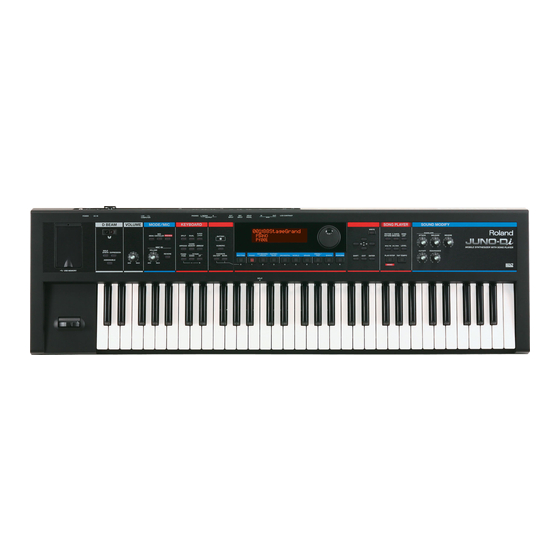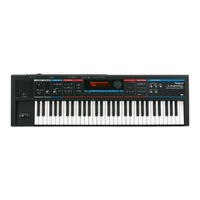
Roland JUNO-Di Manuals
Manuals and User Guides for Roland JUNO-Di. We have 2 Roland JUNO-Di manuals available for free PDF download: Owner's Manual, Workshop
Roland JUNO-Di Owner's Manual (136 pages)
Mobile Synthesizer with song player
Brand: Roland
|
Category: Synthesizer
|
Size: 13 MB
Table of Contents
Advertisement
Roland JUNO-Di Workshop (17 pages)
Mobile Synthesizer with Song Player
Brand: Roland
|
Category: Synthesizer
|
Size: 4 MB

